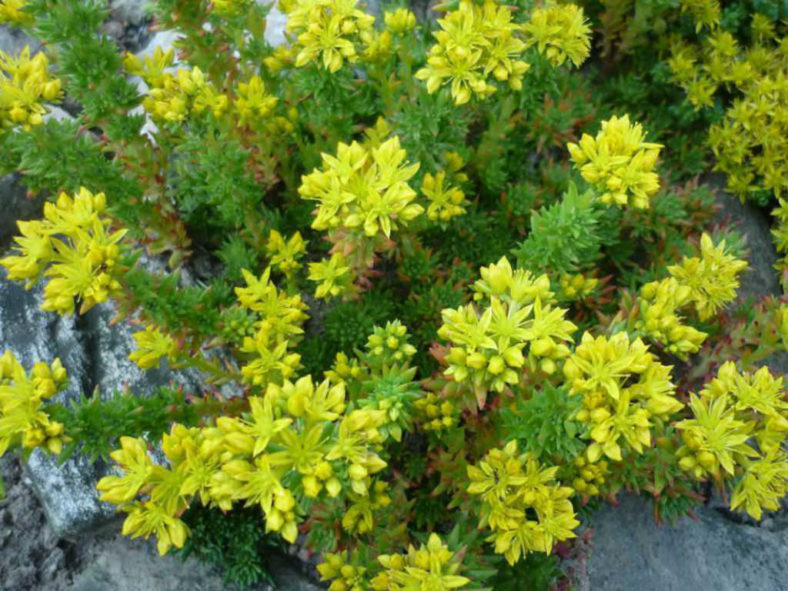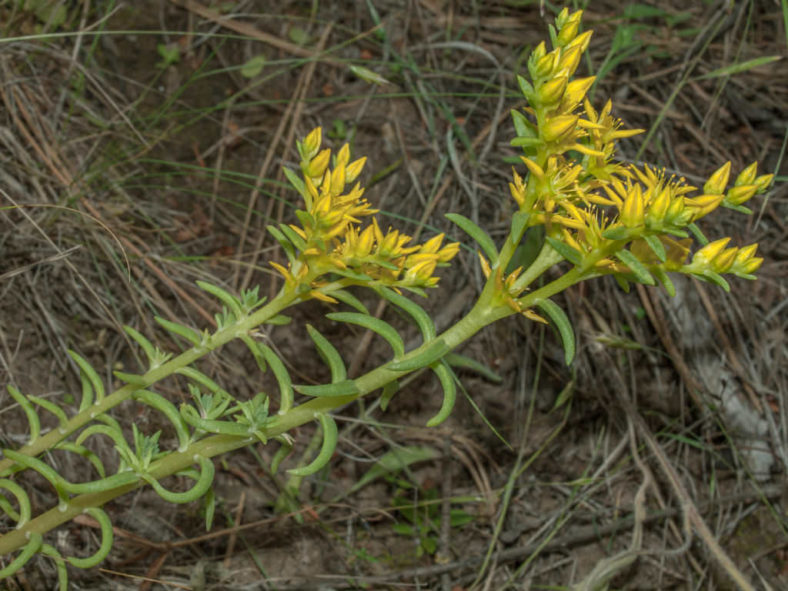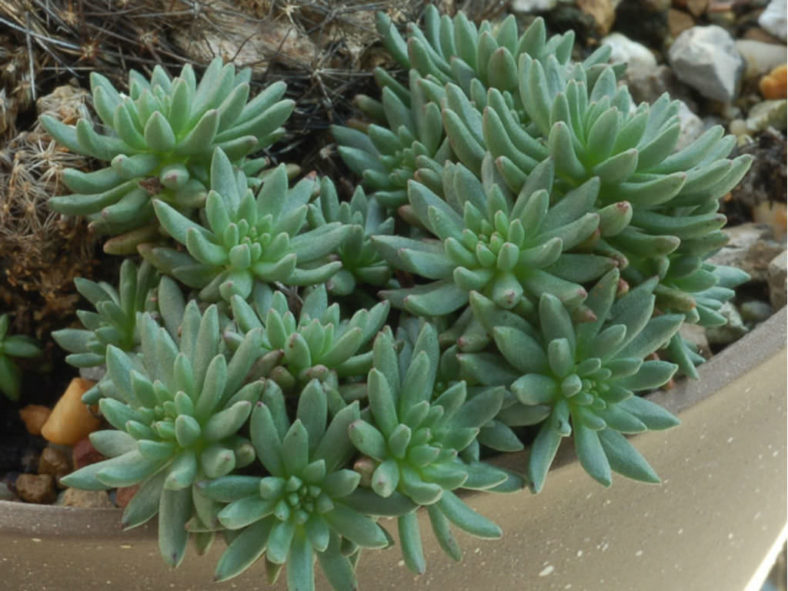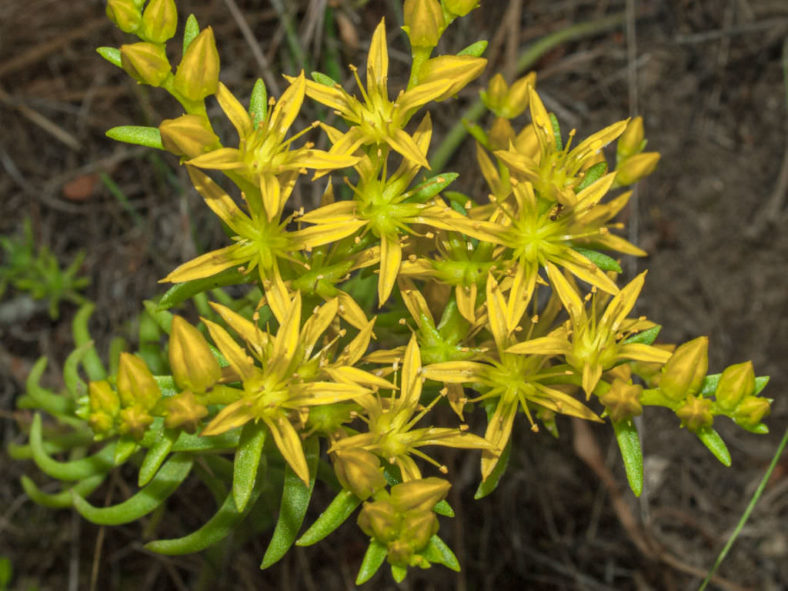Scientific Name
Sedum stenopetalum Pursh
Common Name(s)
Golden Constellation, Narrow-leaved Sedum, Wormleaf Stonecrop
Synonym(s)
Amerosedum stenopetalum, Sedum coerulescens, Sedum douglasii, Sedum subclavatum
Scientific Classification
Family: Crassulaceae
Subfamily: Sempervivoideae
Tribe: Sedeae
Genus: Sedum
Etymology
The specific epithet "stenopetalum (sten-oh-PET-al-um)" means "having narrow petals" and refers to the shape of the petals.
Origin
Sedum stenopetalum is native to western North America (Washington, Oregon, northern California, Idaho, and western Montana in the United States, and Alberta and British Columbia in Canada).
Description
Sedum stenopetalum is a succulent plant with decumbent, branched stems that terminate in viviparous rosettes. It can grow up to 8 inches (20 cm) tall. The rosettes form short erect inflorescences with plantlets and fall to the ground to propagate new plants. The leaves are green, lance-shaped, and can measure up to 0.6 inches (1.5 cm) long.
The flowers are star-shaped with five petals, appearing in many-flowered cymes from late spring to early summer. The petals are lance-shaped, deep yellow, sometimes with a green to brown dorsal keel, or almost white.

How to Grow and Care for Sedum stenopetalum
Light: These succulents grow best in locations where they enjoy the full sun for at least six hours daily. Most species will tolerate partial shade but will not thrive in deep shade.
Soil: Sedums do not like to sit in waterlogged soil, so drainage is essential to prevent root rot. Choose a gritty, well-draining soil.
Hardiness: Sedum stenopetalum can withstand temperatures as low as -20 to 30 °F (-28.9 to -1.1 °C), USDA hardiness zones 5a to 9b.
Watering: Sedum plants are drought-tolerant but do need some water. They do their best with regular watering from spring through fall. Water thoroughly and wait for the soil to dry out before watering again.
Fertilizing: A balanced organic fertilizer each spring is generally all Sedums require. Feeding is unnecessary as the plants are divided annually and provided with fresh soil.
Repotting: Sedums in containers require little more care than those in gardens. Repot your plants when they outgrow their current pot by moving them to a larger container to hold the plant better.
Propagation: Once you have one Sedum, it is easy to make more by taking stems or leaf cuttings and dividing the plant. Sedums are also easy to grow from seed.
Learn more at How to Grow and Care for Sedum.
Toxicity of Sedum stenopetalum
Sedums are not listed as toxic for people but can be mildly toxic to pets and children.
Links
- Back to genus Sedum
- Succupedia: Browse succulents by Scientific Name, Common Name, Genus, Family, USDA Hardiness Zone, Origin, or cacti by Genus
Photo Gallery
Click on a photo to see a larger version.


